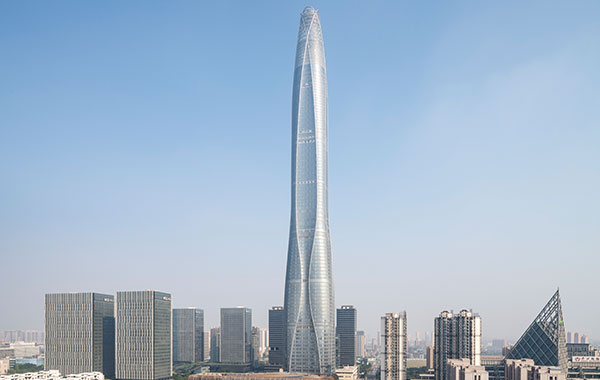Filter by
You must be a CTBUH Member to view this resource.

35 Hudson Yards
Hudson Yards Tower E, Equinox Tower, 32 Hudson Yards
Building
Completed
2019
Residential / Hotel
All-Concrete
LEED Gold targeted
304.8 m / 1,000 ft
72
144
217
21
97,547 m² / 1,049,987 ft²
You must be a CTBUH Member to view this resource.
You must be a CTBUH Member to view this resource.
Proposed
Construction Start
Completed
Usually involved in the front end design, with a "typical" condition being that of a leadership role through either Schematic Design or Design Development, and then a monitoring role through the CD and CA phases.
The Design Engineer is usually involved in the front end design, typically taking the leadership role in the Schematic Design and Design Development, and then a monitoring role through the CD and CA phases.
The Peer Review Engineer traditionally comments on the information produced by another party, and to render second opinions, but not to initiate what the design looks like from the start.
The Design Engineer is usually involved in the front end design, typically taking the leadership role in the Schematic Design and Design Development, and then a monitoring role through the CD and CA phases.
The main contractor is the supervisory contractor of all construction work on a project, management of sub-contractors and vendors, etc. May be referred to as "Construction Manager," however, for consistency CTBUH uses the term "Main Contractor" exclusively.
Other Consultant refers to other organizations which provided significant consultation services for a building project (e.g. wind consultants, environmental consultants, fire and life safety consultants, etc).
These are firms that consult on the design of a building's façade. May often be referred to as "Cladding," "Envelope," "Exterior Wall," or "Curtain Wall" Consultant, however, for consistency CTBUH uses the term "Façade Consultant" exclusively.
Material Supplier refers to organizations which supplied significant systems/materials for a building project (e.g. elevator suppliers, facade suppliers, etc).
You must be a CTBUH Member to view this resource.
Usually involved in the front end design, with a "typical" condition being that of a leadership role through either Schematic Design or Design Development, and then a monitoring role through the CD and CA phases.
The Design Engineer is usually involved in the front end design, typically taking the leadership role in the Schematic Design and Design Development, and then a monitoring role through the CD and CA phases.
The Peer Review Engineer traditionally comments on the information produced by another party, and to render second opinions, but not to initiate what the design looks like from the start.
The Design Engineer is usually involved in the front end design, typically taking the leadership role in the Schematic Design and Design Development, and then a monitoring role through the CD and CA phases.
The main contractor is the supervisory contractor of all construction work on a project, management of sub-contractors and vendors, etc. May be referred to as "Construction Manager," however, for consistency CTBUH uses the term "Main Contractor" exclusively.
Other Consultant refers to other organizations which provided significant consultation services for a building project (e.g. wind consultants, environmental consultants, fire and life safety consultants, etc).
These are firms that consult on the design of a building's façade. May often be referred to as "Cladding," "Envelope," "Exterior Wall," or "Curtain Wall" Consultant, however, for consistency CTBUH uses the term "Façade Consultant" exclusively.
Material Supplier refers to organizations which supplied significant systems/materials for a building project (e.g. elevator suppliers, facade suppliers, etc).
2021 CTBUH Awards
2021 CTBUH Awards
22 August 2018 - CTBUH Research
28 October 2015 - Event

12 December 2019
CTBUH Research
The year 2019 was remarkable for the tall building industry, with 26 supertall buildings (300 meters or taller) completed, the most in any year. This...

09 March 2020
The opening of Edge, the highest outdoor sky deck in the Western Hemisphere, offering 360-degree views of New York City’s iconic skyline will be celebrated...

12 December 2019
CTBUH Research
The year 2019 was remarkable for the tall building industry, with 26 supertall buildings (300 meters or taller) completed, the most in any year. This...

22 October 2015
Jay Cross, Hudson Yards
Hudson Yards is the largest private real estate development ever undertaken in the United States. The site, built over a working rail yard, will eventually...

09 March 2020
The opening of Edge, the highest outdoor sky deck in the Western Hemisphere, offering 360-degree views of New York City’s iconic skyline will be celebrated...

15 March 2019
At noon on March 15, 2019, New York’s newest neighborhood ceremonially opened for business. Hudson Yards‘ first public-facing attractions, the Shops & Restaurants and Thomas...

05 March 2019
New details and renderings have been released for 35 Hudson Yards, set to be the tallest residential tower in the Hudson Yards neighborhood at over...
22 August 2018
CTBUH has released a Tall Buildings in Numbers (TBIN) interactive data study on the world's tallest buildings with dampers.
28 October 2015
CTBUH 2015 delegates toured High Line, which have significantly changed the urban landscape of New York City, from its history to its near-future.
28 October 2015
CTBUH 2015 delegates toured the Hudson Yards develoment which is the largest private real estate development in the history of the United States.
27 October 2015
The Hudson Yards Networking Reception took place on Tuesday evening in the incredible Time Warner Center, offering great views of Columbus Circle at the corner of Central Park.
Subscribe below to receive periodic updates from CTBUH on the latest Tall Building and Urban news and CTBUH initiatives, including our monthly newsletter. Fields with a red asterisk (*) next to them are required.
View our privacy policy